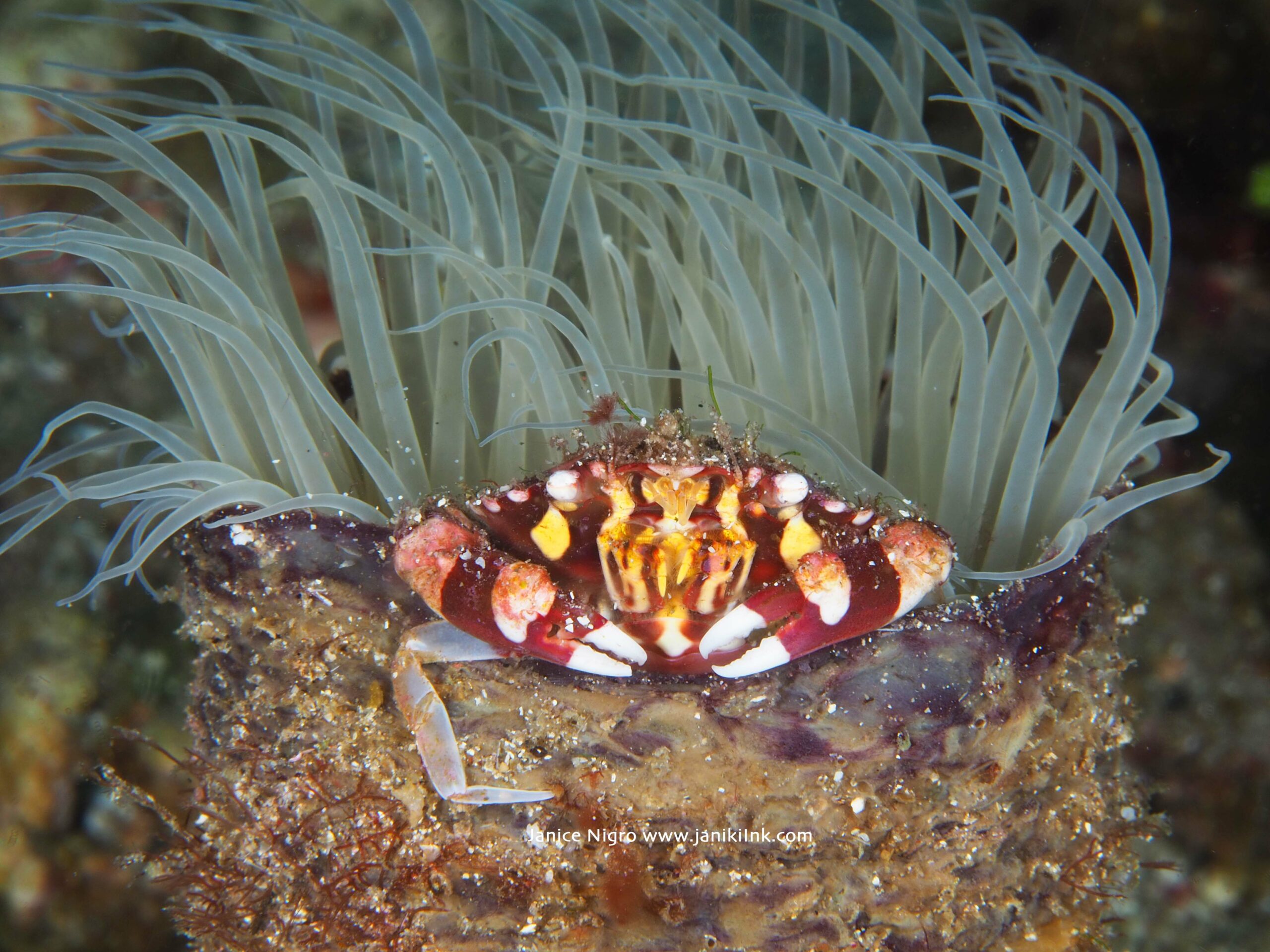All the reasons why you want to dive in Alor, Indonesia

Top reasons to dive in Alor
written by Janice Nigro
This small blog is basically all the top reasons why you want to join our team to dive in Alor in 2020.
Wall diving
The walls are resplendent with life. The sense of awe you have during these dives cannot be captured accurately in any image.
My favorite walls were the Great Wall of Pantar and Babylon. You won’t be able to get enough of them; time and air will disappear in an instant. I had a hard time focusing on the search for small stuff because the coral and sponges were so densely packed and colorful. Nevertheless, our treasure hunt for those days yielded nudibranchs galore, a leaf scorpionfish, a pygmy seahorse, hawkfish, and even a painted frogfish. Although the dives start out at 20 to 25 meters, you are just as likely to have your mind blown for over an hour if you never go below 10 meters.
Other wall dives to not miss: Red Sand Wall, Pleasant Surprise, the Arch and Cathedral.

The caves and pools
We were dropped off near the island shoreline for Wolong Caves. We turned on our torches like we were police detectives and began our exploration of the first cave literally under/into the island. There were shockingly few critters to see, not even sponges or soft corals attached to the walls. Just blackness. The dive was also a little challenging to navigate; you are in a confined space with a surge. The motion is rhythmic, and I got the feeling I wasn’t really moving forward, like we were kids on a swing.
The second cave was completely different; the walls and the ceiling were covered with colorful creatures. A large, resident marble ray was resting in the sandy bottom at the exit facing away from us, perhaps a little grumpy at our morning invasion.
At Pool Party, the pools are rings of lava encompassing white sandy areas which might have been 5 to 10 meters across and only a couple meters deep. You could descend in the middle of one, do a full 360, and view life all around you. The sessile creatures capture your eye immediately, but our guide spotted a ghost pipefish and several orangutan crabs, reminding us to keep our eye out for the small stuff. At Pool Party and other similar sites, it looked as if seeds had been randomly thrown about and creatures grew up everywhere.
Other similar dives: School’s Out, Apuri Bay and Anemone Fields.

Sloping sandy
Sloping sandy sites, such as Blue House (Rumah Biru), really show just how prolific life is in Alor. The sand was clean-no trash-and they were overpopulated with corals and sponges just as the wall dives. Time is always up too soon. Critters are creeping around everywhere. At Black Rhino, you are just about guaranteed to see a rhinopias scorpionfish. You might also see seahorses, nudibranchs (jorunna rubescens) or harlequin crabs poised on a tube anemone. Anemones of all sorts are extremely abundant in Alor, and they are mini habitats full of different types of shrimp and crabs in addition to the anemonefish. I saw more harlequin crabs of all sizes in Alor than anywhere else I have been diving.
Muck diving
Although the morning dives were mixed somewhat between reef and muck, the afternoon dives were strictly muck, more in a traditional sense of rubble or North Sea green bleakness. The current on many of these dives was particularly strong, possibly because we arrived on a full moon. Our dive at Pussy Galore (because you are supposed to see octopuses) was best described by Olivier from Belgium, “It took us 28 minutes to move forward and 2 minutes to go back.”
We adopted the strategy of swimming against the current which worked for looking for macro critters. We saw Coleman shrimp and zebra crabs in fire sea urchins, small frogfish, a thorny seahorse, cockatoo waspfish, and lobsters.
Other muck dives: Matap, Lothar’s Place, Ghost town, and Barry’s Bay.

Night diving
The bounty in the water keeping all this life together was especially visible on the night dives. Bioluminescing critters of crazy shapes and colors were darting through the water like miniature shooting stars.
At Mini Wall, I was captivated by the crabs coexisting with another creature, like a character with an exotic headpiece from Alice in Wonderland’s Mad Hatter party. The crabs, performing a balancing act with the creature on its head, would reach out and grab the shooting stars right out of the air…ur, water… like superheroes in a Hollywood film. The sea was so thick with life; it was gross and fascinating at the same time. The usual suspects are out hunting at night, cuttlefish of all sorts, sea stars and mollusks, and there were some great electric clams embedded in the wall. It’s also a chance to take a closer look at the abundant hard coral polyps feeding at night.
The jetty
The sea life in Alor was also efficient at taking over manmade substrates. At B-Jetty (let’s keep some secret to ourself), creatures flourished on the concrete pillars of the new jetty. In just a couple of years, sponges and soft corals of diverse colors have claimed the jetty as their own. Resident frogfish were comfortably resting in their sponges with a view high atop the pillars. But surprises are everywhere. Nudibranchs were out on the rubble under the jetty, big enough for the nearly blind to see. I even found an octopus in a stony coral. The dive provokes a sort of erratic profile up and down the pillars and across the rubble. However, the dive at depth is only ~17 meters.
The diving is only one part of the allure of Alor.
Join our trips for 2020 : September 12 to 25th, 2020 and October 31st to November 13th, 2020